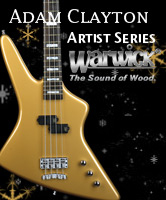Warwick Interview
| The Warwick Adam Clayton Reverso Signature Bass, used by Adam during the 360° tour is a true eye-catcher. Surely some of you noticed this specific bass, not only in the opening sequence of the 2010 shows with Return of the Stingray Guitar, but also during other songs throughout the show? But what is the story behind this unusual model? Was it custom-made in accordance with Adam’s individual demands? What is a collaboration between an artist and an instrument designer like? U2tour.de got the answers to these and similar questions by the instrument manufacturer itself, the German company Warwick GmbH & Co Music Equipment KG. Warwick was founded in 1982 by Hans-Peter Wilfer, whose father had previously been involved in the manufacturing of instruments for decades, and who gained a lot of success and intimate knowledge of creating guitars with his company Framus that he had started in 1946 (in 1995, Framus became a part of Warwick). Utilising this enormous know-how within the family, Warwick very quickly achieved great success. As early as the mid-1980s, Warwick built a bass model for John Entwistle, bass player in The Who. Other Warwick endorsers include Jack Bruce (Cream), Robert Trujillo (Metallica) or Bootsy Collins, to name-drop a few. Originally starting out with a range of three models, Warwick is now producing an extensive selection of products with more than 40 different basses, guitars and components. For Warwick’s 30th anniversary this September, an Open House Day was held featuring many Framus Artists. Adam Clayton had been invited but had to cancel at short notice, as he was busy with other commitments. Marcus Spangler is Warwick’s quality control and product manager, as well as its instrument designer. He started building guitars in his father’s carpentry workshop at an early age, and eventually his hobby turned into his profession. He has worked for Warwick as product manager for five years, and is now responsible for, amongst other roles, new designs and supporting and providing advice to Warwick endorsers. He took some time out to give U2tour.de an extensive overview of their collaboration with Adam Clayton, as well as the field of instrument manufacturing. U2tour.de: How did you come to work with Adam Clayton in the first place? Who approached who? Warwick: Adam was looking into the story of John Entwistle, The Who’s bassist, who had endorsed Warwick and who had his own Buzzard Signature Bass. This was how Adam discovered Warwick. However, all the instruments that Adam normally plays are completely different from the ones that Warwick creates. You will find differences regarding the wood types and other features. Adam generally plays very classical basses that have been on the market since the 1950s and 1960s. And they have not truly changed since then. Warwick basses have constantly been advanced and are fairly modern regarding their electronics or pickups! 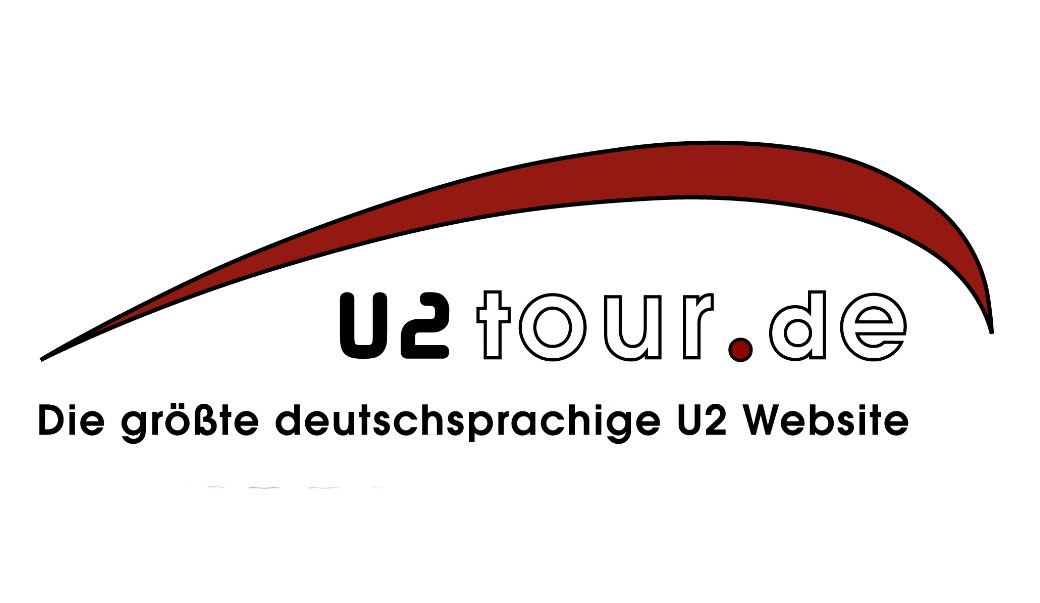
U2tour.de: And how did you get in contact eventually? Warwick: Dallas Schoo wrote to my boss (Hans-Peter Wilfer, founder and managing director of Warwick) saying that Adam had been occupied with John Entwistle’s history just then, and that he would be interested in trying out a John Entwistle bass. My boss obviously answered that, of course, Adam could try that bass and any other Warwick instruments. At that time, they were recording the album for the 360° tour, No Line on the Horizon. The instruments were sent to U2’s studio. And the funny thing was, Dallas said that Adam agreed to try out the Buzzard Bass, but my boss said, "Well, if he is going to try out the Buzzard bass, we could send him all the other instruments too”. So about 15 basses were sent to the studio for Adam. There was only Dallas with Adam and The Edge in the studio at the time. And Dallas was very busy because he had to set up everything on his own. He thought there was only one Buzzard Bass coming in from Germany, which he would tune and then everything would be ready. However, then 15 instruments arrived (laughs). Of course, Adam wanted to try out every single one of them. Edge told Dallas to tune it this way and that way … and then Adam came up and said he wanted to try the next one … Consequently, Dallas was constantly hectic. He had to unpack every single bass, tune it, and adjust it for Adam. This was a huge task. Afterwards, Dallas told me that this had been crazy! As I said, Adam then played the Buzzard Bass. There are also some videos around where you see him playing the Buzzard, or the Stryker model. He also used that bass to record a song for the album, but I don’t remember exactly which one. Anyhow, after that, Adam’s interest in Warwick had been thoroughly reinforced. Adam then wrote to my boss saying that everything was quite good; however, the basses would not really sound the way he was used to. He asked whether Warwick could possibly build something similar to a Fender Jazz Bass or a Fender Precision Bass, the basses he actually played. Well, my boss’s answer was "If Adam wants to play a Fender, he should go to Fender, he would get what he wanted there. But should he like to play a Warwick, we would be glad to build a Warwick according to his requests. But we won’t build a Fender bass.” Dallas later told me that, when reading this, Adam asked whether Hans-Peter Wilfer was now angry with him [laughs], as there is certainly a little bit of competition and rivalry in our market. But our reaction awakened his interest, and this is how our collaboration started. U2tour.de: Well, this kind of self-confidence is certainly understandable. Warwick: Yes, sure. We were just being honest and Adam said that we were the first company to react this way. Other companies probably would have said, "We’ll build whatever you’d like ". But we had the balls and said ‘NO’. I think this probably impressed him a bit and then we started our collaboration. We first worked on a Streamer Model using various wood types, and we slightly extended the body. Yet these modifications were discarded. Adam had the idea to use the Stryker, which he had actually quite liked but which did not have exactly the sound he was looking for. U2tour.de: And at that point you started developing a new model? Warwick: Yes. We asked Adam whether we could build a Signature Model for him and he liked the idea. So this is how the story of the Adam Clayton Reverso actually started. And if you know the Stryker ... it looks like the Explorer guitar played by The Edge. Adam immediately came up with the brilliant idea to flip the bass vertically, to reverse it, to create something completely new. However, we couldn’t transfer everything 100%. If you only reversed the instrument's shape you would not be able to play the high frets, as the horn would stick out too far. This would not have worked. So, we consequently had to modify the body as well. Starting off by sending basic sketches until the feedback was ok, we then built a plywood sample, which was merely a flat board. This sample showed the basic shape and the size, enabling you to review the size of the model. That’s what we sent to Adam. U2tour.de: This is slightly surprising. I thought that you first had a look at what technical and, in particular, sound requirements were necessary and then later adapted the design to these. Warwick: You can incorporate all technical variables into an instrument later on. At first everything is about basic construction - will the design work at all? This is why we sent out the templates, and it was important to Adam to find out what the instrument looked like when wearing it. As I said earlier, we sent some templates to him, he chose a certain body, and we built the first prototype, which he certainly tested the sound of. Some things were still not quite right for him, so we tested various woods. Most of the time, the problem is that musicians do not really know the exact sound they are looking for. They can neither define it nor say, "Listen, let’s build it from this particular wood, include this particular pickup and these particular electronics." It just doesn’t work like that. Everybody hears differently and tastes differ. Adam then said, "I like this feature in this model, this one in that model ..." and we tried to incorporate everything into this one model. 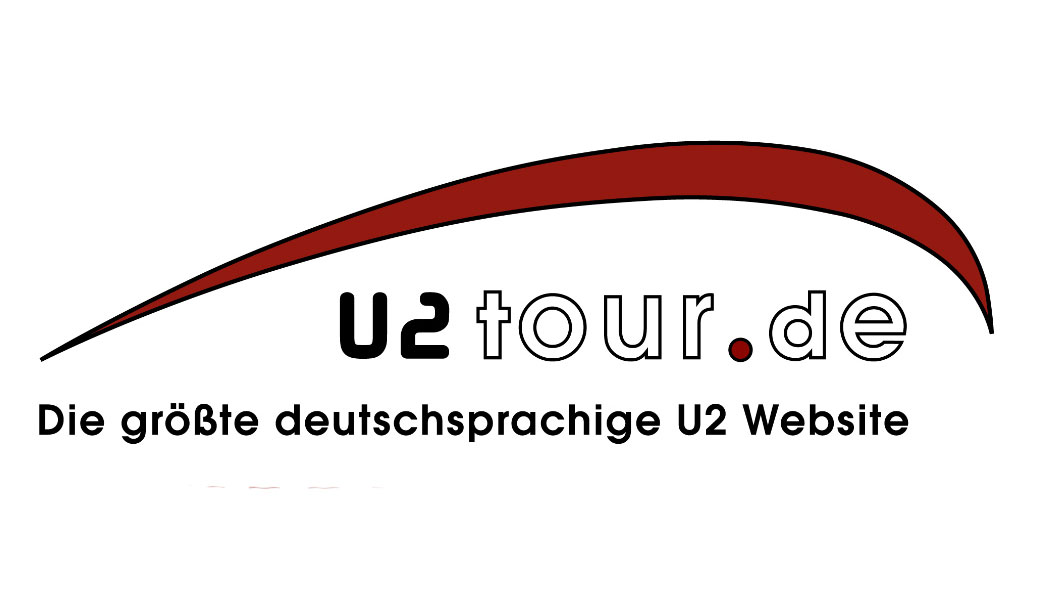
U2tour.de: Did you communicate directly with Adam? Warwick: At the very beginning, I agreed all features with Stuart Morgan, Adam's technician. We then sent over our first prototype and Stuart replied, "See, this part here isn’t so good, Adam doesn’t like it. And this, neither. And this ..." And then you build the next model. This is how it slowly grows. You change the pickups, send over new pickups and ask them, "Please test this pickup. What do you think of it? And what about these tone controls?" This is how, step by step, a new instrument is created. U2tour.de: How long did the process take from the initial idea to the final instrument? Warwick: Altogether, it took about one and a half years until everything was 100% perfect. U2tour.de: And this whole process took place during and after the recording sessions for No Line on The Horizon and the preparations for the tour? Warwick: Yes, that is correct. After finalizing the shape, we created several Reversos with varying knob layouts. Some fans found out that there was something being developed and asked themselves, "What kind of electronics is Adam using now? What is inside this bass?" There are several photos showing Adam using the bass, sometimes with four knobs, then three, later two, and then in the final version the bass had three knobs again. We ultimately completed development and production of the bass in the summer of 2009, right at the beginning of the 360° tour, and this is when Adam visited us on our premises in Markneukirchen. U2tour.de: When exactly did that happen and how did it come up? Warwick: It was the day before the concert in Berlin (18th July 2009). We had invited him several times prior to that, and had let him know that he was always welcome. Very famous musicians usually visit some time or another, if you are lucky, but definitely not that early in a working relationship. Adam, however, really wanted to visit our company and have a look around to see what exactly we do. So he rather spontaneously visited us whilst on his way to Berlin. He landed in Hof, the airport closest to our premises, roughly half an hour's drive away and I picked him up there. We showed him our production site, discussed a few topics, and then handed over the first instruments i.e. the Reverso bass and also a Streamer Stage II. And by then he had to leave for Berlin. U2tour.de: And when was this Reverso first used? Did you have a chance to see that? Warwick: As early as in Berlin the following day. This is rather unusual as musicians usually test the instrument first, and if it’s not 100% perfect, they do not play it in public. Only when everything is as desired, you hit the stage with it. Adam, however, wanted to try the bass right away. And we were there in Berlin. Adam specifically took some time out for us. He came to the VIP lounge before the show only for Warwick, for me and Jonas Hellborg, our Warwick bass player, to have a little chat with us. It was really cool that he did that. Then after the show, they usually leave the stage and hop into their cars right away, so there’s no chance to talk to them U2tour.de: Was that your only opportunity to see the bass live on stage? 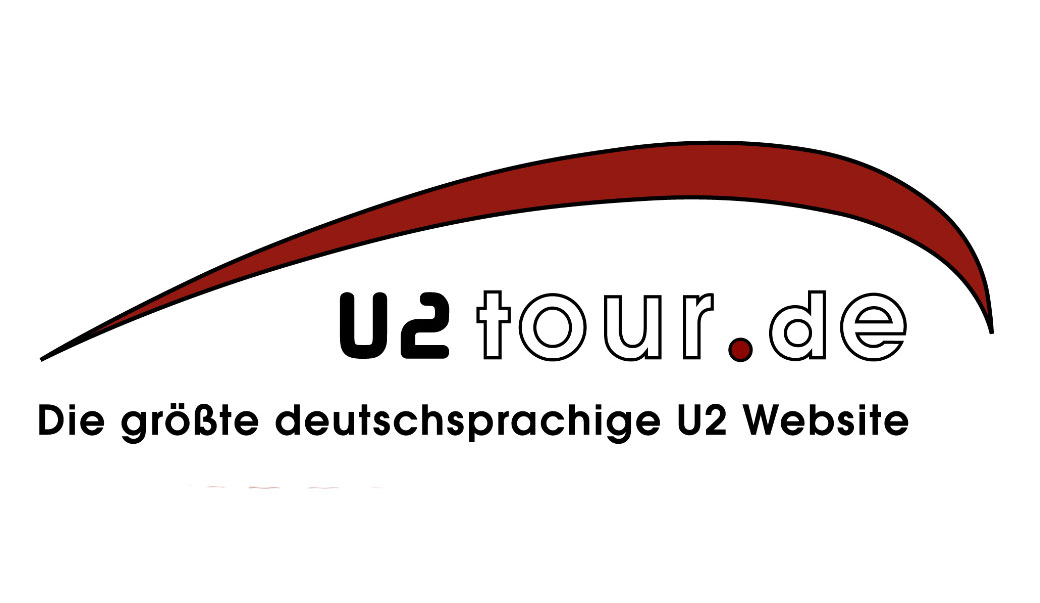
Warwick: No, Adam invited us to their gig in Frankfurt one year later (10th August 2010). We got into a huge traffic jam on our way there. We were stuck there three kilometers away from the stadium for one and a half hours. That really was a disaster, as we couldn’t get to the stadium in time to talk before the concert. But then we received a message from U2’s management saying that it was unfortunate that it hadn’t worked out, but that Adam still wanted to talk to us after the show, as this was the sole reason we had come in the first place. As it was all really short notice, we were told to wait at the steps leading down to the stage. We were brought to the stage, U2 left the stage, and we went along with them, quickly said hello to Adam and then he went. But I give him huge credit, I have to say, for taking time nevertheless and being like "Hey, then let’s just do it this way, otherwise you guys would have come here for nothing.” Well it certainly shows how he appreciates us for building the instruments. He didn't have to do this. Taking time for us despite their tight schedule was really a nice gesture. U2tour.de: Seeing the bass live in action at such large concerts like U2 360° or watching the recordings later on must be really great for you, right? Warwick: Yes, sure. However, it’s not like there’s just me or only one guitar manufacturer involved in building the instrument, but a whole production team. And of course, these people are highly motivated when they see a popular artist playing their work on stage, being able to say that they were part of the manufacturing process. It does make people proud. U2tour.de: I totally understand that! What is working with Adam like? How do you communicate? Warwick: For the most part we communicate via e-mail but he also calls us every now and then. As I mentioned earlier, he once visited us in Markneukirchen, and we met at the two concerts. Working with Adam is really great fun, because he knows exactly what he wants. He is fastidious but very nice, not at all snobbish, and a really pleasant guy. And he has also got a good sense of humour. We had a great conversation during our trip from the airport, he was telling lots of stories about his life as a musician. We certainly didn’t get bored. U2tour.de: That really sounds like a very pleasant collaboration on every level. Will it continue? Any plans on, e.g. further developing the Reverso? 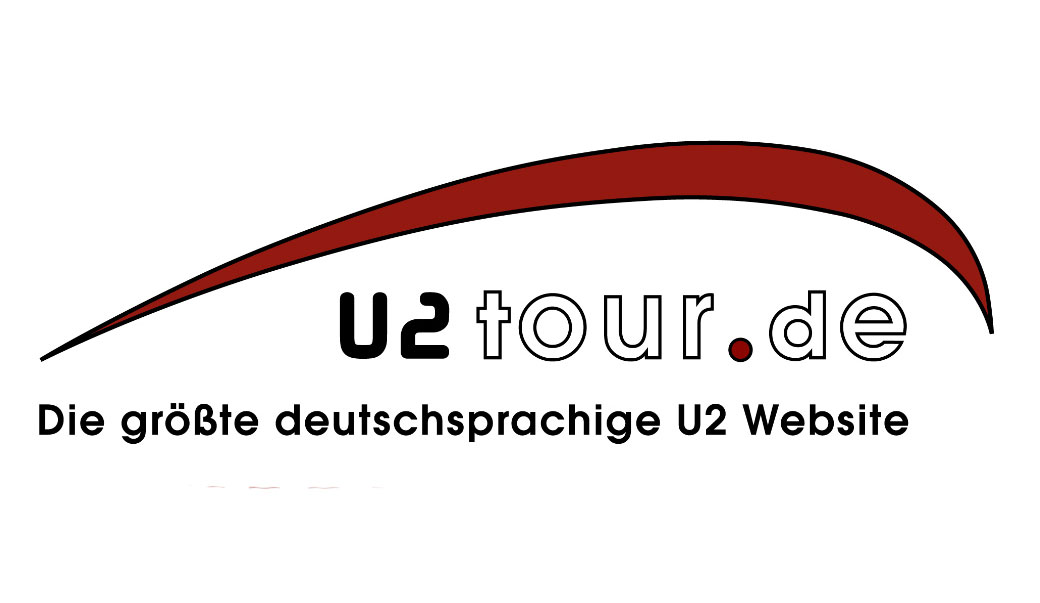
Warwick: Nothing fixed as of now. We are working on a model that has not been developed specifically for Adam, but we have him in mind during the development process. It’s a model we think he’d like. It will be sent to Ireland within the next few weeks so he can check it out. But this isn’t a new collaboration yet. We’re just asking whether Adam is interested in trying the instrument. And should he like it, we will be pleased to go on working on that project together. U2tour.de: Thank you very much, Marcus, for taking the time to answer our questions in detail, and for granting us a look behind the scenes of the development and manufacture of instruments! Published by u2tour.de Interview by: Sabine Schieweck Translation from German by: Christoph Beller, Hanna Pallua and Sabine Schieweck with Cathal McCarron Published with kind permission from: Principle Management Ltd. Dublin & Warwick GmbH & Co Music Equipment KG, Markneukirchen |
